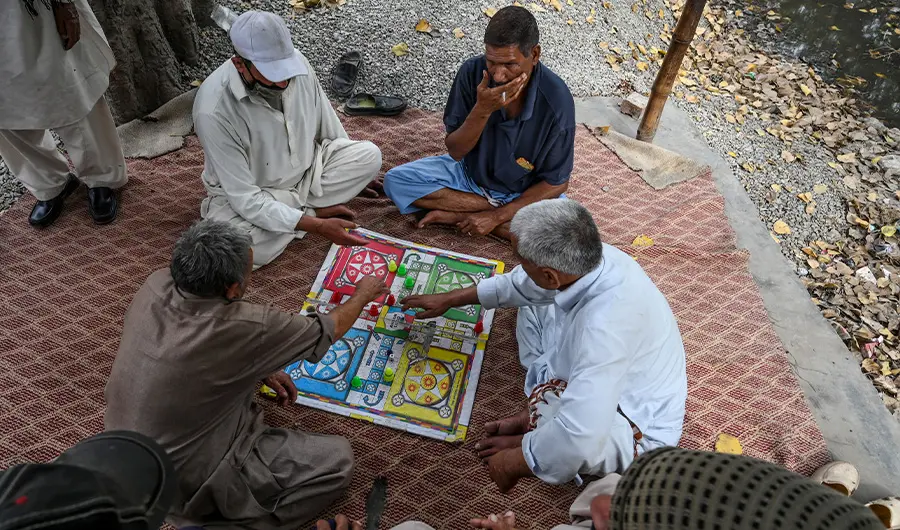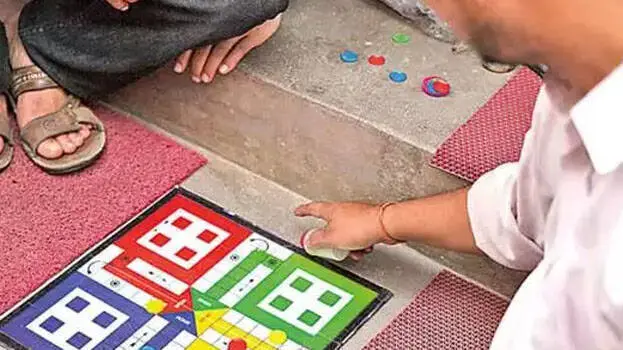Ludo
INTRODUCTION TO LUDO
Ludo is one of the most enjoyable and family-friendly games. It is considered to have started a long time ago, but officially it was recognized as “Ludo” by Britain in 1896. Its origins are believed to be the games of Pachisi and Uckers.
Ludo is a strategy board game for two to four players, in which the players race their four tokens from start to finish according to the rolls of a single die. Like other cross and circle games.

CONTENTS
A Ludo board consists of a cross-shaped square with each arm that has three columns of squares, while every column usually has six rows. The center of the board forms a large square called the home space. Each corner of the board is colored with some variations of the red, green, blue, and yellow colors representing the starting space for the tokens of each player. There is a same-colored square along with the starting space from which a token can start moving on the track called the starting square.
SETUP
Each player chooses its color and puts its four tokens to their corresponding starting space. A single die determines the movement of the tokens, and each side of it consists of a number between 1 to 6. Players usually take their turns in a clockwise direction. Players have full control over which of their four tokens to move after the die roll according to the numbers on the die.
HOW TO PLAY
At first, each player rolls the die and can only move one of their tokens outside the starting space (into the starting square) if there is a 6 on the die.
However, if there is another number except 6, a token cannot be released from the starting space, and the turn is given to the next player.
At any point in the game, if there is the number “6” on the die in a player’s turn, the player should roll the die once again as a bonus turn before moving any of its tokens. And if on the bonus turn, the player again earns a “6”, he/she should roll the die once again for the second bonus turn before moving out any of its tokens. In the second bonus turn, if the player gets anything else except “6”, the player can move its tokens accordingly. Still, if there is again the number “6”, it is called a “dead turn,” which eliminates the effect of all three turns the player had, and without moving any token, the turn is passed to the next player.
At each throw, players decide which of their tokens to move. The numbers on the rolled die represent how much the token or tokens can be moved forward in a clockwise direction on the board. If no tokens can be moved legally, the turn is passed to the next player.
If token land upon a different colored token (opponent’s token), the opponent’s token is said to be eliminated, and it is moved back to the starting space of the opponent. If a token lands on the same color (its own token), it is called a block which cannot be eliminated until these tokens separate from each other. During the path, a token on a colored square is considered safe and cannot be eliminated by its opponents, even if it’s placed on an opponent’s colored square.

WINNING
After circumnavigating the entire board path, a token proceeds up the home space. The token can only be placed in the home space by an exact number on the die. Whichever player relocates all of its four tokens to the home space fist, wins!
VARIATIONS
For children, any number can be used to release the token from the starting space to speed things up.
Some specific geographic regions prefer the numbers 1 and 6, both to release a token from the starting space to the track.
